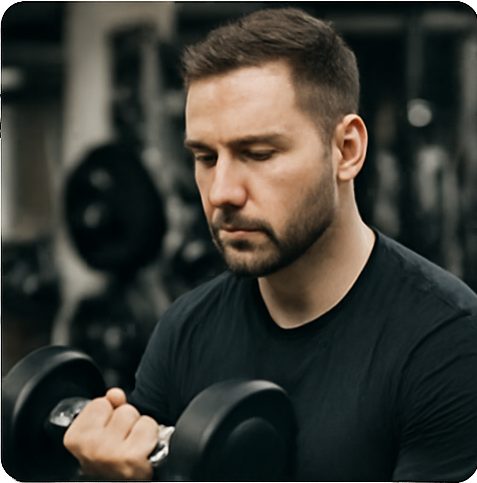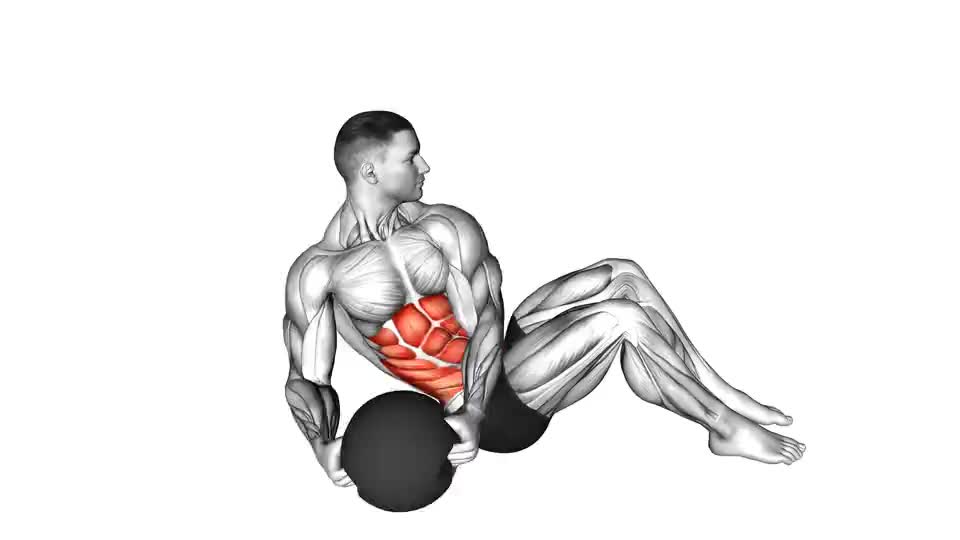The first time I tried the medicine ball Russian twist at the gym, I honestly had no idea what I was doing. I just grabbed a ball, sat down, twisted a few times, and hoped for the best.
At first, I kinda felt it in my abs—but also in my lower back, which didn’t feel right. I looked around and saw other people doing it too, some super fast, some holding big weights, some barely moving. That made me wonder: was I even doing this thing correctly?
So I started digging. Talked to a few trainers at my gym, read some articles, tried different tweaks, and basically went down the rabbit hole. Turns out, the medicine ball Russian twist can be a solid core move—but only if you know what you’re doing.
Here’s what I learned after messing it up, fixing my form, and figuring out how to make it work without hurting my back.
How to Actually Do a Medicine Ball Russian Twist
Step-by-Step: Proper Form That Won’t Wreck Your Back
When I first picked up the medicine ball at the gym, I thought, “Twist side to side, how hard can it be?”
Turns out—it’s super easy to mess up.
After getting a quick tip from one of the trainers, I started doing it the right way. And wow, huge difference. Here’s exactly how I do it now:
- First off, I sit on the mat with my knees bent and my heels planted—not floating. That gives me more control, especially when things start to burn.
- Then I lean back a bit—roughly 45 degrees. Not too far, though. Otherwise, I lose tension in my core and just end up straining my lower back.
- I hold the medicine ball at my chest. Not up high. Not out in front. Right at the center.
- Then I twist from my core—not just swinging my arms. I rotate my whole upper body.
- I tap the ball next to my hip, then over to the other side.
- I keep breathing and stay tight through the core.
That’s it. Super simple, but easy to mess up if you don’t pay attention. Going too fast? You’ll lose form. Holding the ball too far out? Your shoulders take over.
Trust me—clean form hits your abs way harder.

Foot Position, Back Support & Leg Movement—All the “Little Things” That Matter
At first, I tried lifting my feet off the floor because, you know, it looked cooler. But I had zero control. My legs were swinging all over. My form sucked.
So now, I start with my heels on the ground. It’s more stable. I can focus on my twist, not keeping balance.
If I’m feeling strong and locked in, I’ll lift my feet a little—but only if my form is solid.
For the back, I keep it neutral. Not slouched. Not arched. Just a clean, braced position. If I feel pressure in my lower back, I know I’m leaning back too far or losing core engagement.
And about the leg movement—if my knees are dancing around, I know I’m twisting from my hips, not my core. Bad sign.
One trick that helped? When warming up, I do a weird but effective trick by placing a foam roller between my knees to keep my body tense and stable. Keeps my legs from flailing and reminds me to twist from the core—not the hips. It actually carried over when I went back to the medicine ball.
What Muscles Does It Work—And Is It Worth Doing?
Targeted Muscles: What You’re Really Training
When I finally locked in good form on the medicine ball Russian twist, I could feel exactly where it hit. And yeah—it lights up your core.
Mainly, it crushes your obliques—those side abs that give you that nice twist-and-cut look. I also feel it a lot through the rectus abdominis (your six-pack area).
There’s some bonus work too. It hits the transverse abdominis a bit (that deep core layer), plus some lower back and even the hip flexors if you’re not careful.
But the biggest thing? It’s a great move for rotational strength. That’s huge if you’re doing other compound lifts in your gym routine—like landmine presses or anything with rotation.
Honestly, it made a big difference in how stable I feel during weighted movements. It’s not just a “look good” ab exercise—it actually carries over to real training.
Common Concerns: Spine Safety, Waist Size & Effectiveness
- Back pain?
Been there. If you feel it in your back instead of your core, something’s off. Usually it’s from leaning back too far, rounding your spine, or going way too fast. Once I slowed down and cleaned up my posture, the pain stopped.
- Spine stress?
Yeah, Russian twists can mess with your spine if you twist like crazy with a heavy ball. But if you control it—no jerky movement, no swinging—your spine’s totally fine. I asked my coach, and he even said the move helps with anti-rotational core control if you do it right.
- Will it make your waist thicker?
Honestly, no. Not unless you’re using a super heavy ball and training like a powerlifter. Most commercial gym routines don’t load the obliques that way. I’ve done these for months, and if anything, it tightened up my midsection—not bulked it.
- Does it actually work?
Yep. But only if you’re focused. If you’re just tapping the ball fast from side to side without bracing your core, it’s basically cardio. It looks like you’re training abs, but you’re not doing much. Once I slowed it down and really twisted with control, that’s when it started to hit.
How Much Weight and How Many Reps Should You Do?
Choosing the Right Weight for Your Level
When I first started doing the medicine ball Russian twist at my gym, I picked a ball that was way too heavy—because of course I did.
Big mistake. My form broke down fast, and my lower back felt it more than my core.
So here’s what I’ve learned the hard way:
- Start light. Like, seriously. Even just bodyweight is fine to nail your form.
- Then try something in the 2–4kg range if you’re just getting started.
- Once you’re comfortable, go for a 6–8kg ball—this is where I feel the burn but still keep control.
- Only go heavier if your form is locked in and your core stays tight the whole time.
In my case, 6kg hits that sweet spot.
Sets and Reps That Actually Work Your Core
Let’s be real—doing 50 fast reps with bad form is useless. I did that for weeks before I figured it out.
What worked for me?
- 3 to 4 sets
- 12 to 20 reps per side
- Short rest between sets—30 to 60 seconds
- And most important: slow, controlled twists
I count the reps out loud sometimes, just to keep myself honest. And I stop the set the second I feel my form slipping. No ego here—clean reps over big numbers every time.If you’re training in a commercial gym and want a core exercise that actually delivers, the medicine ball Russian twist is a solid pick—as long as you stay strict with form and choose the right weight. It’s now a regular part of my core routine, and honestly, it works.

Hi, I’m the editor here at Leadman Fitness. We’re a manufacturer focused on producing top-quality barbells, plates, kettlebells, dumbbells, and strength training gear. I’ve been into sports and fitness for years, and I know my way around all kinds of gym equipment—both from using it and helping create it.
I spend a lot of time understanding the real problems people run into in the gym—whether it’s beginners trying to pick the right gear or experienced lifters looking for something more durable. I stay in close touch with our production team and talk directly with other equipment makers, so we’re always improving based on what real lifters and coaches are looking for.
What I share comes from hands-on experience—stuff that actually helps people train better, not just in theory, but in real gyms.
